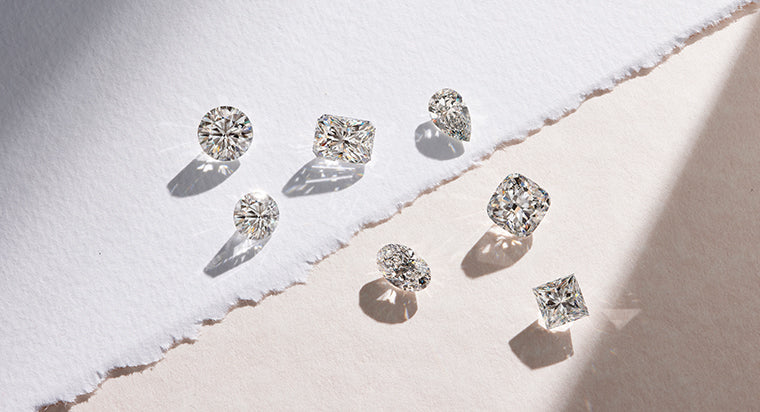
Man-Made Diamond Necklaces: A Sparkling Revolution in Jewelry
Man-made diamonds, also known as lab-grown or synthetic diamonds, have become a popular and sustainable alternative to natural diamonds in the world of jewelry. Among the many forms in which these diamonds are showcased, diamond necklaces are one of the most elegant and timeless pieces of adornment, combining luxury with eco-consciousness. Here’s everything you need to know about man-made diamond necklaces.
What are Man-Made Diamonds?
Man made diamonds necklaces are chemically, physically, and optically identical to natural diamonds. However, unlike their earth-mined counterparts, these diamonds are created in a lab through two primary methods: High Pressure High Temperature (HPHT) and Chemical Vapor Deposition (CVD).
- HPHT mimics the natural process applying intense heat and pressure to carbon to form a diamond.
- CVD involves using carbon gas to deposit layers of carbon atoms onto a substrate, which then crystallize into diamond form.
Both methods result in diamonds that are visually indistinguishable from mined diamonds but without the environmental and ethical concerns associated with mining.
The Rise of Man-Made Diamond Necklaces
The popularity of man-made diamonds has soared in recent years, driven factors such as the growing awareness of ethical sourcing, the environmental impact of diamond mining, and the affordability of lab-grown options. When it comes to diamond necklaces, man-made diamonds offer a perfect blend of luxury and sustainability.
Benefits of Man-Made Diamond Necklaces
- Sustainability: Lab-grown diamonds have a significantly lower environmental impact compared to mined diamonds. They do not require the large-scale excavation of land or the disruption of ecosystems. Choosing man-made diamonds means supporting a more sustainable jewelry industry.
- Ethical Sourcing: One of the most compelling reasons for choosing lab-grown diamonds is the ethical concerns surrounding mined diamonds, such as child labor, exploitation, and funding of conflict (also known as “blood diamonds”). Man-made diamonds are produced in controlled environments with strict labor practices.
- Affordability: Man-made diamonds are generally less expensive than natural diamonds of the same size and quality. This makes diamond necklaces more accessible to a wider audience, allowing people to invest in high-quality jewelry without breaking the bank.
- No Compromise on Quality: Man-made diamonds are identical to mined diamonds in terms of their 4Cs (Cut, Color, Clarity, and Carat Weight). This means that you can get the same sparkling beauty and brilliance, but at a lower price point.
- Customization: Because lab-grown diamonds can be produced in a variety of shapes and sizes, they offer greater flexibility in design. Jewelers can create custom pieces with unique diamond cuts and settings, making each necklace a one-of-a-kind creation.
Types of Man-Made Diamond Necklaces
Man-made diamond necklaces come in various designs, each offering something unique to suit different tastes and occasions. Here are some of the most popular styles:
- Solitaire Diamond Necklace: A classic design featuring a single diamond suspended on a delicate chain. It’s timeless and elegant, perfect for everyday wear or formal events.
- Diamond Pendant Necklace: This style features a single diamond or a cluster of diamonds set in a pendant. Pendant necklaces come in various shapes and settings, including heart-shaped, round, and teardrop designs.
- Diamond Tennis Necklace: A sophisticated style that consists of diamonds set in a continuous line around the neck. This is a popular choice for special occasions and red-carpet events due to its luxurious and eye-catching appearance.
- Diamond Choker Necklace: This style sits closely around the neck and can be adorned with a single row of diamonds or multiple layers. It’s perfect for those who want to make a bold statement with their jewelry.
- Diamond Collar Necklace: A larger and more intricate design, often seen at high-end events. Collar necklaces are made with multiple diamonds set together in a way that gives the illusion of a full necklace of diamonds.
Caring for Man-Made Diamond Necklaces
Like natural diamonds, man made diamonds require proper care to maintain their brilliance. Here are some tips for looking after your diamond necklace:
- Cleaning: Clean your man-made diamond necklace regularly with a soft cloth and mild soap solution to remove dirt and oils. Avoid harsh chemicals that could damage the metal or the diamonds.
- Storage: Store your diamond necklace in a soft pouch or jewelry box to avoid scratches and damage from other pieces of jewelry.
- Avoid Physical Impact: While diamonds are durable, they can be prone to chipping if hit against hard surfaces. Handle your necklace with care, especially when wearing it during physical activities.
The Future of Man-Made Diamond Necklaces
The demand for man-made diamonds is expected to continue growing as more consumers become conscious of environmental and ethical issues. As technology advances, the production of lab-grown diamonds will likely become more efficient and cost-effective, further driving down prices. In turn, man-made diamond necklaces may become even more popular as consumers seek sustainable luxury without compromising on quality.
Conclusion
Man-made diamond necklaces offer a dazzling and ethical alternative to traditional mined diamond jewelry. With sustainability, affordability, and customization at the forefront, they cater to the growing demand for conscious luxury. Whether you’re looking for a simple solitaire necklace or an extravagant tennis or choker design, lab-grown diamonds can provide the perfect centerpiece for your collection, all while contributing to a more sustainable future.
Choosing a man-made diamond necklace isn’t just a statement of elegance; it’s a commitment to supporting ethical practices and a cleaner, greener planet.



